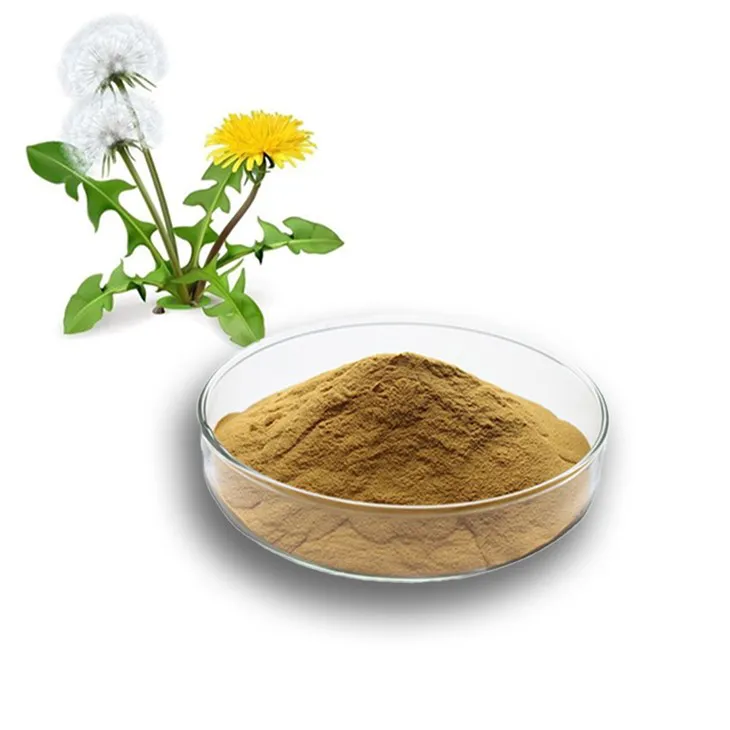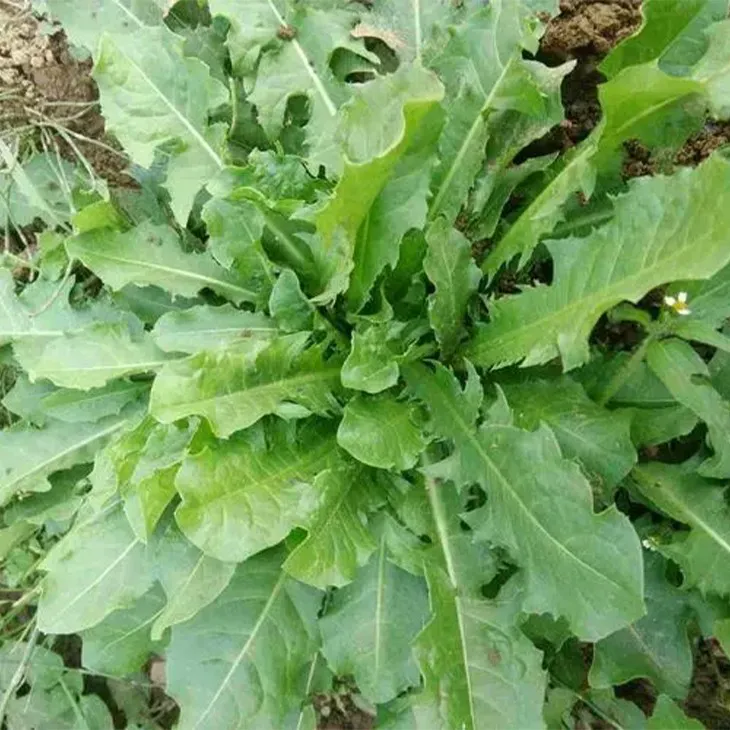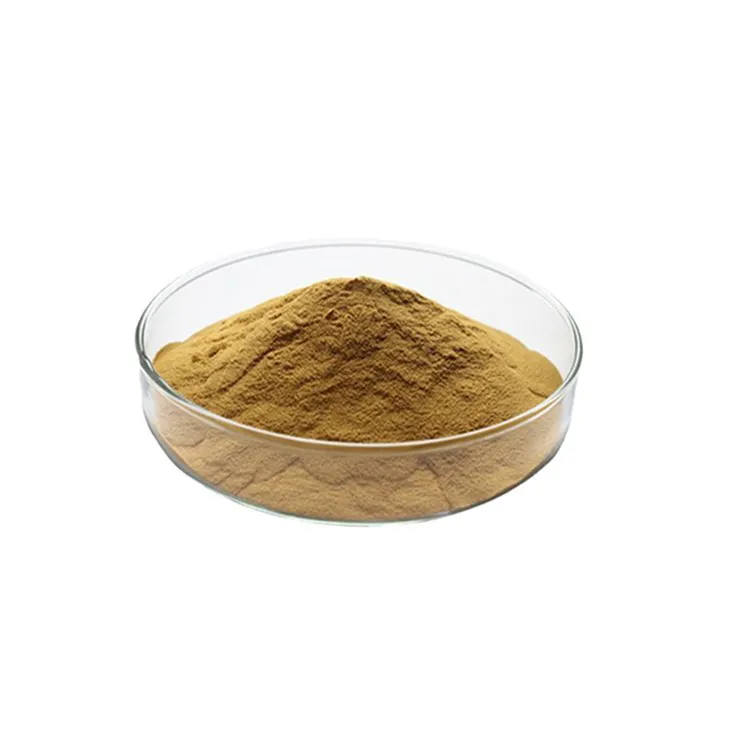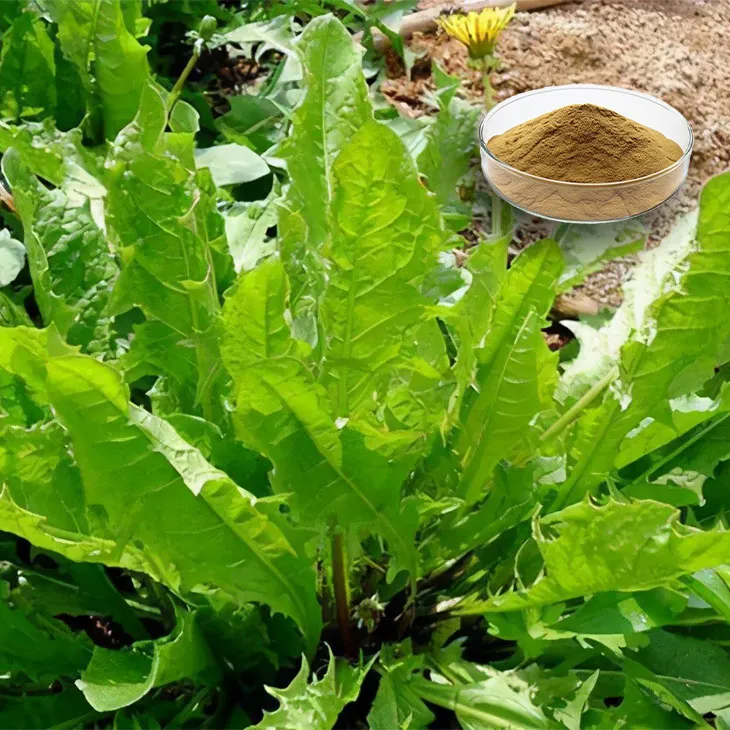- 0086-571-85302990
- sales@greenskybio.com
Extraction technology and production process of dandelion leaf extract.
2024-11-27

1. Introduction
Dandelion (Taraxacum mongolicum) has been widely recognized for its various potential health benefits. Dandelion Leaf Extract, in particular, is of great interest in sectors such as pharmaceuticals and nutraceuticals. The extraction process is crucial in obtaining a high - quality product that can be effectively utilized in these applications.

2. Traditional Extraction Methods
2.1 Maceration
Maceration is one of the simplest and most traditional extraction methods. It involves soaking the dandelion leaves in a solvent, usually ethanol or water, for an extended period. For example, the leaves may be soaked in ethanol for several days to weeks at room temperature.
Advantages:
- Simple equipment requirements. It can be carried out with basic laboratory glassware or even in small - scale home - based setups.
- Low cost, as the solvents used are relatively inexpensive and the process does not require complex machinery.
Disadvantages:
- Long extraction time, which may lead to degradation of some active compounds over time.
- Low extraction efficiency compared to modern methods, resulting in a relatively low yield of the desired extract.
2.2 Decoction
Decoction is a traditional method often used in herbal medicine. In this method, the dandelion leaves are boiled in water for a certain period. For instance, the leaves may be boiled in water for 15 - 30 minutes.
Advantages:
- Can be easily carried out in a household kitchen or in a traditional herbal medicine preparation setting.
- Effective in extracting water - soluble compounds.
Disadvantages:
- Some heat - sensitive compounds may be destroyed during the boiling process.
- Limited to water - soluble components, and may not extract lipid - soluble or other less - polar compounds effectively.

3. Modern Extraction Methods
3.1 Soxhlet Extraction
Soxhlet extraction is a more advanced and commonly used laboratory - scale extraction method. It uses a Soxhlet apparatus, where the dandelion leaves are placed in a thimble and the solvent (such as ethanol or hexane) is continuously recycled through the sample.
Advantages:
- Relatively high extraction efficiency compared to traditional methods, as the solvent is continuously refreshed around the sample.
- Can be used for a wide range of solvents, allowing for the extraction of different types of compounds depending on the polarity of the solvent chosen.
Disadvantages:
- Time - consuming, often taking several hours to complete the extraction process.
- Requires relatively large amounts of solvent, which may be costly and also pose environmental concerns regarding solvent disposal.
3.2 Supercritical Fluid Extraction (SFE)
Supercritical fluid extraction is a state - of - the - art extraction method. In this process, a supercritical fluid, usually carbon dioxide (CO₂), is used as the extracting agent. The supercritical CO₂ has properties between those of a gas and a liquid, which makes it an excellent solvent for extracting various compounds from dandelion leaves.
Advantages:
- Environmentally friendly, as CO₂ is non - toxic, non - flammable, and can be easily recycled.
- High selectivity, allowing for the extraction of specific compounds while leaving behind unwanted substances.
- Can operate at relatively low temperatures, which is beneficial for preserving heat - sensitive compounds.
Disadvantages:
- High - cost equipment is required for generating and maintaining the supercritical state of the fluid.
- The process is relatively complex and requires specialized technical knowledge for operation and optimization.
3.3 Ultrasonic - Assisted Extraction (UAE)
Ultrasonic - assisted extraction utilizes ultrasonic waves to enhance the extraction process. The ultrasonic waves create cavitation bubbles in the solvent, which implode and create mechanical and chemical effects that help in breaking down the cell walls of the dandelion leaves and releasing the active compounds into the solvent.
Advantages:
- Significantly reduces the extraction time compared to traditional methods, often by several times.
- Can increase the extraction yield of active compounds due to the enhanced mass transfer caused by the ultrasonic cavitation.
Disadvantages:
- The effectiveness of the extraction may be influenced by factors such as the frequency and power of the ultrasonic waves, which need to be carefully optimized.
- May not be suitable for large - scale industrial production without proper scale - up of the equipment.

4. Production Process of Dandelion Leaf Extract
4.1 Pretreatment of Raw Materials
The first step in the production process is the pretreatment of dandelion leaves. This involves collecting fresh and healthy dandelion leaves. Once collected, the leaves are carefully washed to remove dirt, debris, and other contaminants.
After washing, the leaves may be dried, either in the sun or using a drying apparatus. Drying helps in reducing the moisture content, which is important for subsequent extraction steps. For example, the leaves may be dried at a temperature not exceeding 50°C to preserve the integrity of the active compounds.
4.2 Selection of Extraction Method
The choice of extraction method depends on various factors such as the desired compounds to be extracted, the scale of production, cost considerations, and environmental impact.
For small - scale production or research purposes:
- Traditional methods like maceration or decoction may be sufficient, especially when cost is a major constraint and a relatively low yield can be tolerated.
- Ultrasonic - assisted extraction can also be a good option for small - scale production, as it offers relatively high efficiency with relatively simple equipment.
For large - scale industrial production:
- Supercritical fluid extraction may be preferred due to its high selectivity and environmental friendliness, despite the high initial investment in equipment.
- Soxhlet extraction can also be used, especially when dealing with large volumes of raw materials and when a wide range of solvents need to be tested for optimal extraction.
4.3 Optimization of Extraction Parameters
Once the extraction method is selected, the extraction parameters need to be optimized. These parameters include temperature, pressure (in the case of methods like supercritical fluid extraction), extraction time, and solvent - to - material ratio.
Temperature:
- In general, for heat - sensitive compounds, lower temperatures are preferred. For example, in ultrasonic - assisted extraction, a temperature range of 30 - 40°C may be optimal to avoid degradation of active compounds while still maintaining a reasonable extraction rate.
- In supercritical fluid extraction using CO₂, the temperature is typically in the range of 40 - 60°C, which helps in maintaining the supercritical state of CO₂ and also affects the solubility of different compounds.
Pressure:
- In supercritical fluid extraction, pressure is a crucial parameter. For example, when using CO₂ as the supercritical fluid, pressures in the range of 100 - 300 bar are often used. Higher pressures can increase the density of the supercritical fluid, which in turn increases its solubility for certain compounds.
Extraction Time:
- The extraction time needs to be balanced. In Soxhlet extraction, if the time is too short, the extraction may be incomplete, but if it is too long, it may lead to degradation of compounds or excessive solvent consumption. For example, a typical Soxhlet extraction may take 4 - 8 hours.
- In ultrasonic - assisted extraction, the extraction time can be significantly reduced compared to traditional methods. Usually, 15 - 60 minutes may be sufficient depending on the power of the ultrasonic waves and the nature of the raw materials.
Solvent - to - Material Ratio:
- A proper solvent - to - material ratio is important for efficient extraction. For example, in maceration, a solvent - to - material ratio of 5:1 to 10:1 (volume/weight) may be used. A higher ratio may increase the extraction yield, but it also increases the cost of the solvent and the volume of the extract obtained.
4.4 Post - Extraction Processing
After the extraction process, the obtained extract usually needs further processing. This may include filtration to remove solid particles such as cell debris and insoluble substances.
The filtered extract may then be concentrated to increase the concentration of the active compounds. Concentration can be achieved through methods such as evaporation under reduced pressure, which helps in removing the solvent while minimizing the loss of active compounds.
Finally, the concentrated extract may be dried to obtain a powder form, which is more convenient for storage, transportation, and further formulation in pharmaceuticals or nutraceuticals. Drying methods such as spray drying or freeze - drying can be used depending on the nature of the extract and the requirements of the end product.

5. Conclusion
The extraction technology and production process of Dandelion Leaf Extract play a vital role in obtaining a high - quality product for various applications in the pharmaceutical and nutraceutical industries. Each extraction method has its own advantages and disadvantages, and the choice of method should be based on a comprehensive consideration of factors such as production scale, cost, and the nature of the desired compounds.
Optimization of extraction parameters is also crucial for maximizing the extraction yield and quality of the extract. Through continuous research and development, more efficient and sustainable extraction methods are expected to be developed in the future, further promoting the utilization of dandelion leaf extract in various fields.
FAQ:
What are the traditional extraction methods for dandelion leaf extract?
Traditional extraction methods for dandelion leaf extract mainly include maceration and decoction. Maceration involves soaking the dandelion leaves in a solvent (such as ethanol or water) for a long time to allow the active components to dissolve into the solvent. Decoction is the process of boiling the dandelion leaves in water for a certain period. However, these traditional methods may have some disadvantages. For example, maceration is time - consuming, and decoction may cause the degradation of some heat - sensitive active components.
What are the modern extraction technologies for dandelion leaf extract?
Modern extraction technologies for dandelion leaf extract include supercritical fluid extraction (SFE), ultrasonic - assisted extraction (UAE), and microwave - assisted extraction (MAE). Supercritical fluid extraction uses supercritical carbon dioxide as a solvent, which has the advantages of high selectivity, mild extraction conditions, and no solvent residue. Ultrasonic - assisted extraction utilizes ultrasonic waves to accelerate the mass transfer process, reducing extraction time. Microwave - assisted extraction heats the sample quickly and evenly through microwaves, improving extraction efficiency.
How does temperature affect the production process of dandelion leaf extract?
Temperature plays a crucial role in the production process of dandelion leaf extract. In traditional decoction methods, high temperature can accelerate the dissolution of active components, but it may also cause the degradation of heat - sensitive substances. In modern extraction methods like supercritical fluid extraction, an appropriate temperature is required to maintain the supercritical state of the fluid. In ultrasonic - assisted and microwave - assisted extractions, temperature control is also important to ensure the extraction efficiency and the quality of the extract. If the temperature is too high, it may lead to the destruction of active ingredients; if it is too low, the extraction efficiency may be reduced.
What is the role of pressure in the extraction of dandelion leaf extract?
Pressure is an important factor, especially in supercritical fluid extraction. In supercritical fluid extraction of dandelion leaf extract, appropriate pressure is necessary to maintain the supercritical state of the fluid (usually carbon dioxide). Higher pressure can increase the density of the supercritical fluid, which in turn enhances its solubility for the active components in dandelion leaves. However, too high pressure may require more complex equipment and higher costs. In other extraction methods such as ultrasonic - assisted and microwave - assisted extractions, pressure also has an impact on the extraction process to some extent, mainly related to the physical and chemical changes of the sample under different pressures.
How is the quality of dandelion leaf extract controlled during the production process?
During the production process of dandelion leaf extract, quality control is achieved through multiple aspects. Firstly, the selection of raw materials is crucial. High - quality dandelion leaves should be used, free from contaminants and diseases. Secondly, strict control of extraction parameters such as temperature, pressure, and extraction time according to the selected extraction method. Thirdly, purification and separation processes are carried out to remove impurities. Finally, quality testing is performed using methods such as chromatography to ensure that the extract meets the required standards in terms of active component content, purity, and safety for applications in pharmaceuticals and nutraceuticals.
Related literature
- Advanced Extraction Technologies for Botanical Extracts"
- "Optimization of Dandelion Extract Production: A Review"
- "The Impact of Extraction Conditions on the Quality of Herbal Extracts"
- ▶ Hesperidin
- ▶ Citrus Bioflavonoids
- ▶ Plant Extract
- ▶ lycopene
- ▶ Diosmin
- ▶ Grape seed extract
- ▶ Sea buckthorn Juice Powder
- ▶ Fruit Juice Powder
- ▶ Hops Extract
- ▶ Artichoke Extract
- ▶ Mushroom extract
- ▶ Astaxanthin
- ▶ Green Tea Extract
- ▶ Curcumin
- ▶ Horse Chestnut Extract
- ▶ Other Product
- ▶ Boswellia Serrata Extract
- ▶ Resveratrol
- ▶ Marigold Extract
- ▶ Grape Leaf Extract
- ▶ New Product
- ▶ Aminolevulinic acid
- ▶ Cranberry Extract
- ▶ Red Yeast Rice
- ▶ Red Wine Extract
-
Green coffee bean Extract
2024-11-27
-
Licorice Root Extract Powder
2024-11-27
-
Senna Leaf Extract
2024-11-27
-
Peppermint Oil
2024-11-27
-
Yam Extract
2024-11-27
-
Lemon Juice Powder
2024-11-27
-
Phellodendron Extract
2024-11-27
-
Soy Extract
2024-11-27
-
Ivy Extract
2024-11-27
-
American Ginseng Root Extract
2024-11-27





















